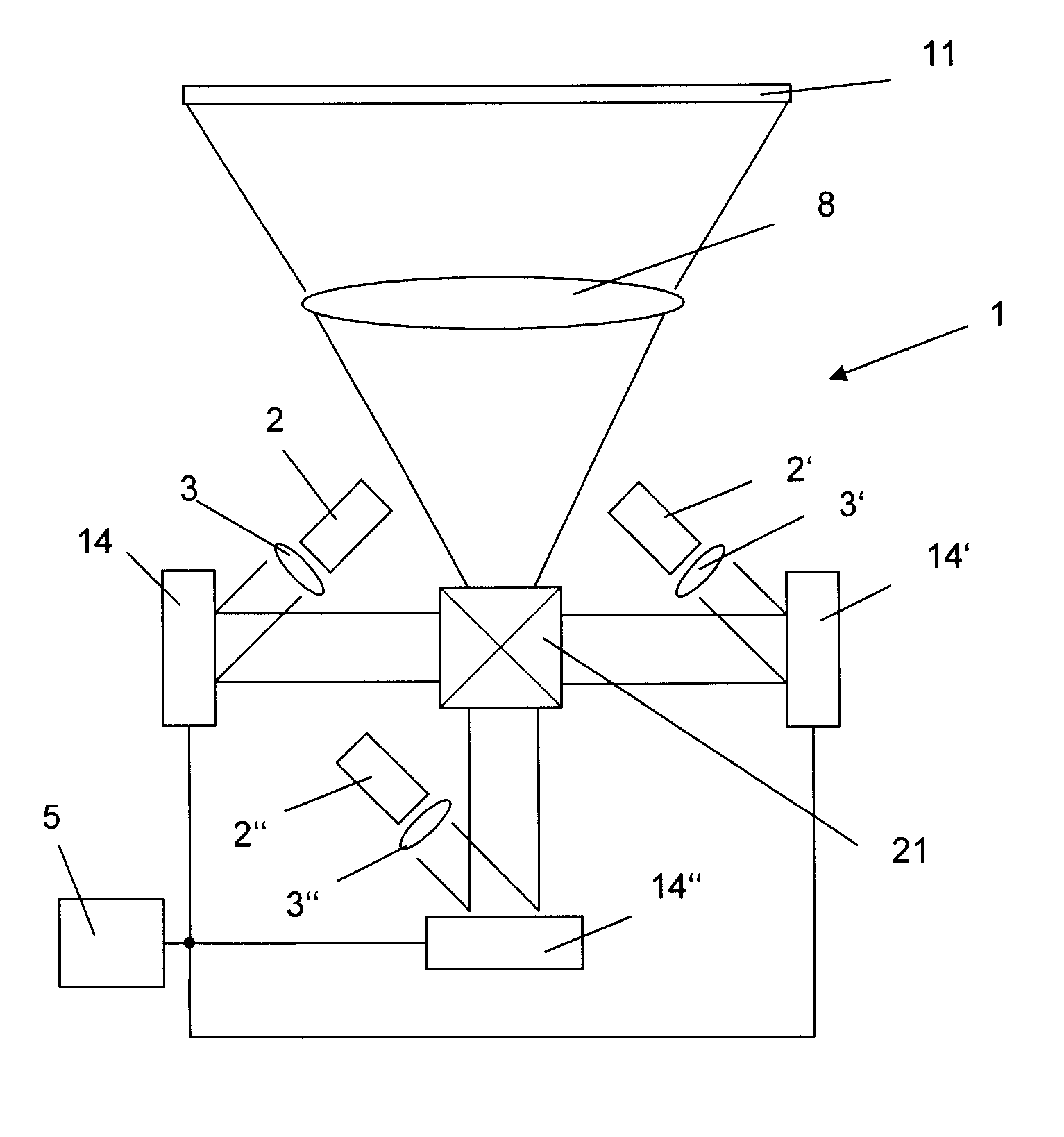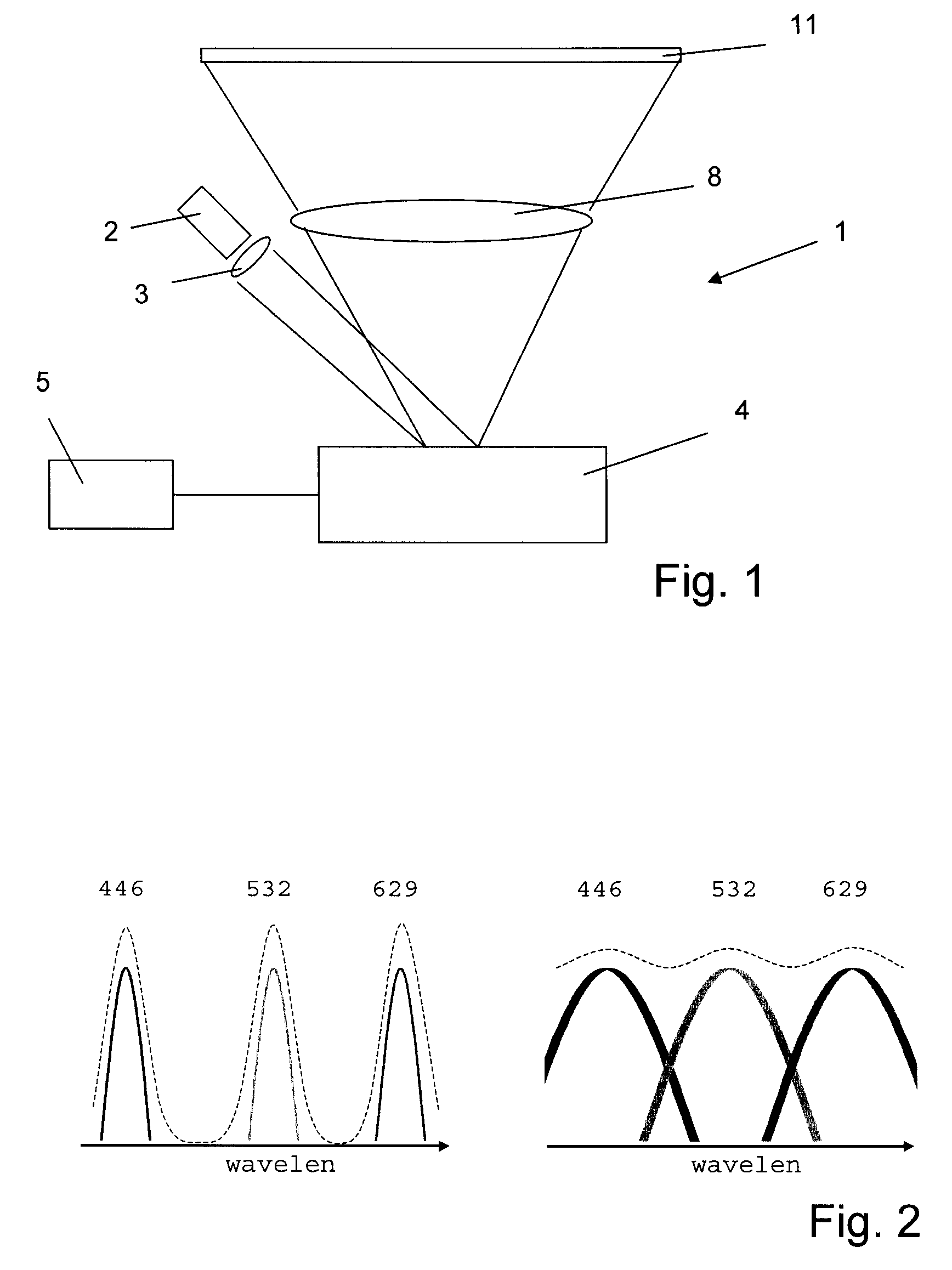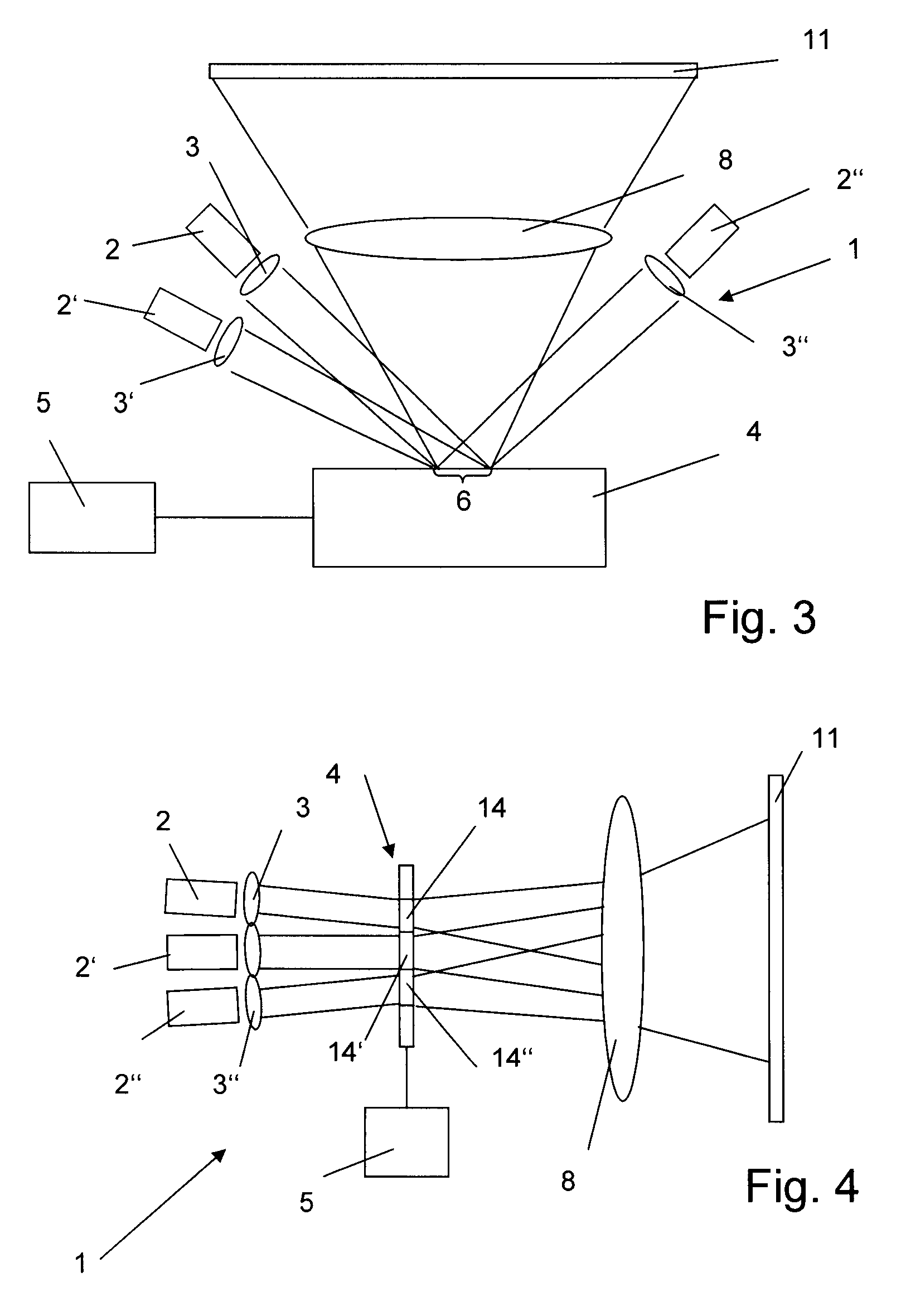Display apparatus, method and light source
- Summary
- Abstract
- Description
- Claims
- Application Information
AI Technical Summary
Benefits of technology
Problems solved by technology
Method used
Image
Examples
Embodiment Construction
[0101]The display system shown in FIG. 1 includes a display apparatus 1 and a projection object having a display surface. In the shown embodiment, the projection object is a very schematically depicted screen 11 or panel.
[0102]The display apparatus 1 comprises a light source and a collimating optics 3. The light source includes a superluminescent light emitting diode 2.
[0103]Superluminescent light emitting diodes as such are known in the art. They rely on the principle that in a gain medium, population inversion is maintained by pumping and that due to this, spontaneously emitted radiation is amplified by stimulated emission. The radiation in the superluminescent light emitting diode may be guided by wave guiding means. In contrast to a laser, however, emitted radiation coming from the gain medium is not re-circulated to again enter the gain medium, thus, the gain medium is not in an optical resonator beam path. International patent application publication WO 2005 / 071 762, incorpora...
PUM
 Login to View More
Login to View More Abstract
Description
Claims
Application Information
 Login to View More
Login to View More - R&D
- Intellectual Property
- Life Sciences
- Materials
- Tech Scout
- Unparalleled Data Quality
- Higher Quality Content
- 60% Fewer Hallucinations
Browse by: Latest US Patents, China's latest patents, Technical Efficacy Thesaurus, Application Domain, Technology Topic, Popular Technical Reports.
© 2025 PatSnap. All rights reserved.Legal|Privacy policy|Modern Slavery Act Transparency Statement|Sitemap|About US| Contact US: help@patsnap.com



